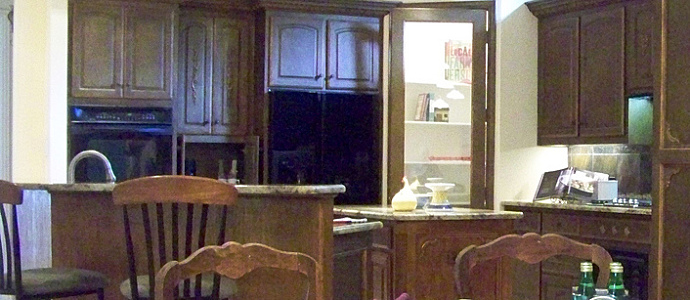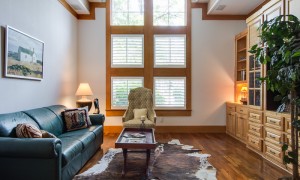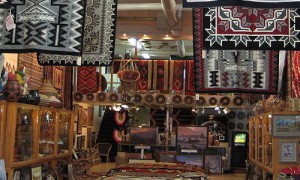Rustic Design Elements Enhance Comfort in Any Decorating Scheme
Making a home your own always involves building a sense of history. Incorporating touches of rustic design, small bits of your personal past, or relics of a distant era or a foreign place can help establish that necessary sense of belonging.
A new home can sometimes seem a little cold and impersonal at first. Following a move, most people don’t feel quite settled until they have incorporated some personal touches or unpacked cherished belongings from a previous residence, whether the move was across the country or down the block. Making a home your own always involves building a sense of history. Incorporating touches of rustic design, small bits of your personal past, or relics of a distant era or a foreign place can help establish that necessary sense of belonging in a new locale.
Besides what you’ve brought from your former home, you can decorate with intentionally rustic design elements to create a sense of grounding and familiarity.
Finding New Uses for Old Items Breeds Familiarity
As counter-intuitive as it may seem, adding a few well-chosen, quirky or improbable accents such as an architectural relic or a treasured family antique can establish your individual style and inject a note of sophistication into any roomscape. If your home is new construction, installing salvaged and reclaimed beams or lintels, using a recycled door on a pantry, or even adding historic wrought iron house numbers can add important personal touches. In the same way, a repurposed piece of furniture used in a new way can rejuvenate a tired interior: an old painted New England trunk or a dented and damaged train lantern from the Midwest could offer relief and contrast to enrich traditional or contemporary decor.
Distressed finishes speak of previous use, and wear connotes a history. Utilizing functional old pieces shows respect for a thoroughly modern concern with ecology and recycling.
Rustic design doesn’t indicate a lack of refinement. It certainly doesn’t require embracing the “country” look so overdone a score of years ago. You don’t need to follow a formula; just explore, evaluate, and be willing to look at decor items with a new eye.
Some Favorite Rustic Design Ideas
All the following have been seen in Dallas/Fort Worth homes:
- Old wrought iron gates used as headboards.
- A pair of well-worn children’s cowboy boots, filled with plaster and used as bookends; they might also be painted or bronzed.
- A slice of tree stump placed on legs; polished and painted as an outdoor checkerboard – the pieces? Painted rocks.
- Old metal children’s wagons, tricycles, bicycles, and toys (as well as car parts such as doors, trunk lids, hubcaps, and side mirrors) used for everything from planters to coffee tables to vanities to chairs and settees.
- De-wired wall sconces and chandeliers used to hold candles on patios and covered porches.
- Old painted doors placed on new metal sawhorses and used as desktops. Computer wires slide right through the doorknob hole!
- Always-popular old boxes and baskets, stylishly storing everything from fruit to yarn to books to kids’ toys.
In North Texas it is relatively easy to find flea markets, local artisans, and creative designers. Rustic design cues can come from the redesign of old warehouse buildings or from the restoration of grand old residences. The possibilities are limited only by your energy and your imagination.
[cf]skyword_tracking_tag[/cf]




